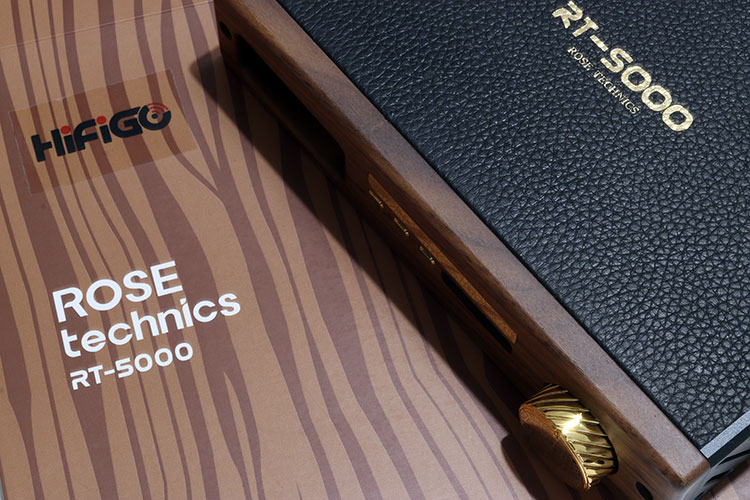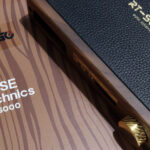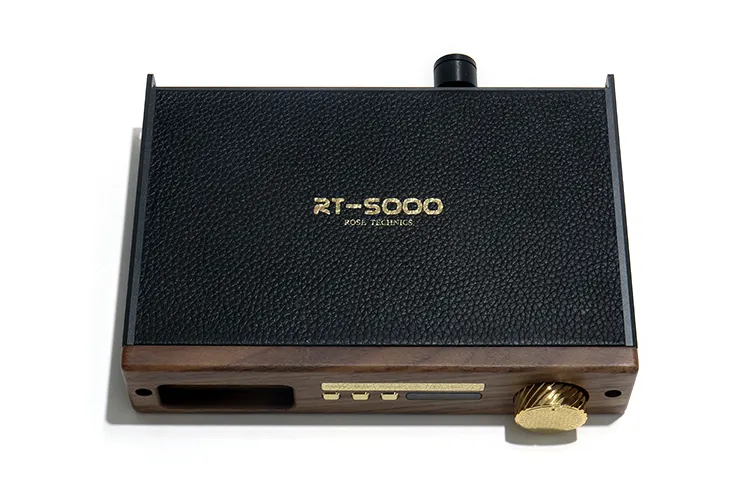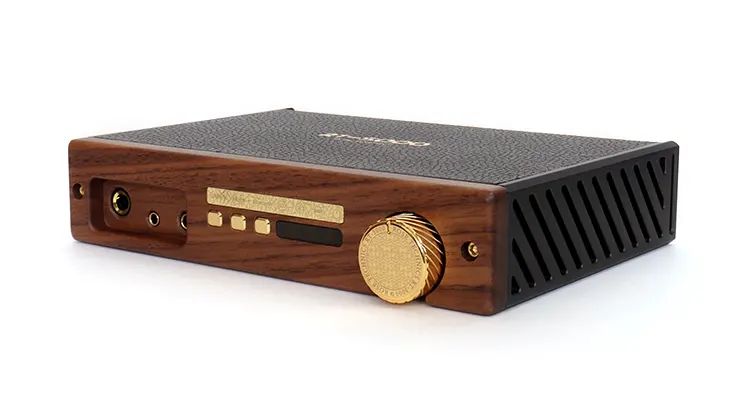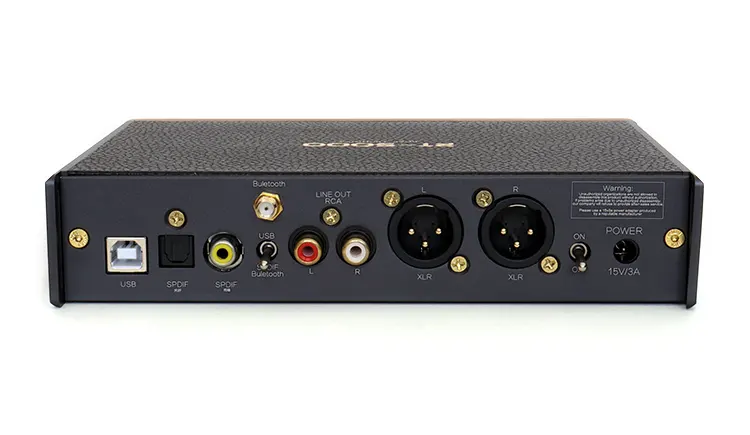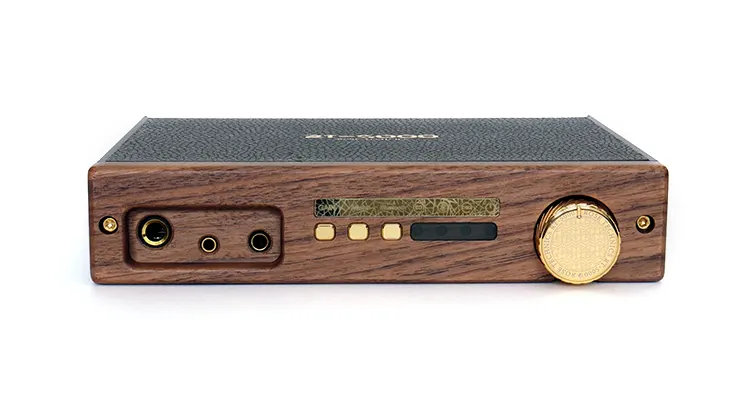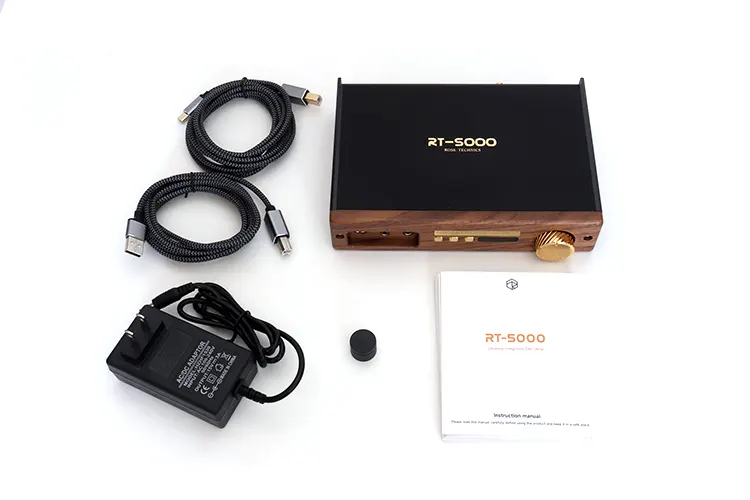Today, Louis reviews the Rose Technics RT-5000, which is a new integrated desktop ES9038PRO DAC and 1.6-watt capable headphone amplifier. It is priced at $599 though currently HiFiGo has it listed at $539 in their summer sale.
Disclaimer: This sample was sent to me for my honest opinion. Headfonics is an independent website with no affiliate links. I thank HiFiGO and Rose Technics for their support.
You can click here to learn more about HiFiGo products that we have previously featured on Headfonics.
Please note, that this article follows our current scoring guidelines which you can read here.
Up until recently, Rose Technics had not entered what I call the mid-tier audiophile gear category although they’ve had their doors open since 2012.
Sure, they have produced a couple of worth-to-mention pieces of gear like the QT-X and the Martini but they’ve never ventured beyond the $500 or above price range category. The RT-5000 integrated DAC/headphone amplifier, changes all that.
The Rose Technics RT-5000 is a combination DAC, a headphone amplifier with balanced topology, and a Bluetooth receiver in a handsome case. It can be purchased in two color schemes, one with a green leather top and one with a black leather top.
The $500 DAC amp combo category is crammed with competition like the HIFIMAN EF400, and iFi Audio NEO iDSD, just to name a few. Within that group, the RT-5000 seems to hold its own. We will compare it to those two models in this review.
Features
DAC
The Rose Technics RT500 uses a pair of flagship ES9038PRO DACs from ESS. ESS calls this DAC the highest-performance model 32-bit DAC out there and seems quite proud of the 140 dB DNR rating in mono they obtained.
The RT-5000 internal DAC section can be accessed through the use of the rear-mounted output ports. The RT-5000 can also act as a control hub but the preamplifier functions of this model can only supply a fixed output and not a variable type.
The DAC section within the Rose Technics RT-5000 brings to the table decoding capabilities that include PCM, and DSD, plus MQA file formats according to what is posted on the Rose Technics manual.
The Rose Technics instruction manual lists the 32-bit, 384kHz PCM capability and it also lists DSD at up to DSD256. Not much is said about MQA capability except for a small blurb.
I did get to play around with the three formats successfully on this model and they all ran fluid, and stable. During listening tests, I never heard any breakup, static, or hiss of any kind to be honest.
Amplification
There are a couple of sets of OPAMPS inside the RT-5000 for power and amplification. There are ten OPA1612 OPAMPS on one end. Eight of these handle the current-to-voltage conversion and two are in the unit’s LPF circuitry.
Rose Technics also incorporated a pair of Muse flagship JRC MUSEES01-FET in a unique copper frame. I’m guessing that the copper frame has been implemented for improved heat dissipation.
This combination of components produces up to 1600mW at 32Ω on the balanced side and 800mW on the single-ended side. Those ratings are maximum output ratings but I was able to drive a few demanding cans very well and the max rating seems conservative.
It’s safe to say that the RT-5000 uses a combination of old components with new and that’s fine if the end product performs well. That is what we have here in conjunction with a novel cabinet design.
Bluetooth
Rose Technics only gave the RT-5000 Bluetooth 5.1 capability which is good enough for me. The major BT component is the Qualcomm QCC5125 which is not a bottom-shelf part but is not a latest generation 5.4 chip either.
That’s okay with me because it handles LDAC just fine alongside the usual SBC, AAC, and all the aptX variants except for the latest aptX Lossless codec that hasn’t taken off fully and is not as available as, for example, LDAC.
Bluetooth reception is very good on this unit and to my amazement even when the included antenna is just a stub. I was expecting to receive a common stick type. When I first saw this antenna, I didn’t know what it was until I saw it had the common SMA-type threading.
The sound quality is nice on LDAC. You can tell there’s a small loss in dynamic response. However, the midrange comes through well as do both extremes of the frequency spectrum, with an interesting amount of soundstage, and just a small reduction in high-frequency presence, I’d say 2 dB tops compared to a USB feed.
Design
The Rose Technics RT-5000 is a Rolls Royce. It’s not the most powerful or fastest on the track but it treats you to exotic real wood trimmings, leather-wrapped outer components, anodized, vented metal, and a gold trim package that combined screams luxury.
The etching on the volume knob alone is commendable. You have to get up close to see it. The detailed work carries on with the angled knurled cutouts that didn’t have to be at an angle. There’s a lot of commitment to detail here. They even gold-plated the screws.
Any cons to this design? Some might dislike the countersunk headphone out section but I never ran into any insertion issues, even when I used cables with thick connectors. Perhaps some rubber feet on the bottom to protect the leather-covered bottom.
But what I disliked the most is the lack of information you get from the front panel display which consists of four LEDs. There’s not much information given while using the unit. The LEDs are there mostly to guide you in obtaining the correct settings.
The other issue is the lettering visibility because they’re just etched on the decorative gold strip and are low in contrast. The total package does emit strong artisan characteristics overall.
I/O
During the first runs in manufacturing, the RT-5000 installed the wrong XLR pugs but Rose Technics quickly corrected that and installed the proper male 3-pin XLR connectors to give the user access to the DAC’s output.
There’s also a set of RCA analog outputs that sit alongside the SMA Bluetooth antenna connector and a switch that is marked USB/Bluetooth and SPDIF. This switch is in an uncomfortable position to operate in my opinion and is too close and under the BT antenna. A second switch controls the power on and off.
The switches are common rocker-type switches and perhaps Rose Technics could have found a nicer solution since the unit in general screams luxury and these are simple-looking switches. They do look durable at least.
The rear input section consists of a SPDIF, Optical, and a USB type B connection alongside the SMA connector. The front panel houses the three headphone connections that consist of a single-ended 6.35mm plug and a 3.5mm alongside a 4.4mm balanced tap.
Controls
There are three distinct buttons on the front panel. The first button is where you set the gain. The RT-5000 has 4 gain settings. The second push button is a mute feature.
The third button is where you activate the Bluetooth pairing function. I was able to pair two devices to the RT-5000 with no issues. Just remember, you have to flick the rear toggle switch to listen to a Bluetooth transmission.
Alongside the 3 gold plated buttons are four LEDs and the one on the right side is simply a power-on indicator. The second LED is a digital format indicator. The third LED is used for the Bluetooth pairing sequence.
The fourth LED is to help you choose between the built-in digital filters. This LED gives off a white hue. The LED is labeled EQ but the changes are subtle.
The EQ curves are selected by a press-and-hold action of the gain button and each time that is executed, the system scrolls through a total of what I believe to be seven selections.
The manual doesn’t mention what the curves are called but they seem to be fairly effective. More so than the typical digital filters.
Packaging and Accessories
The Rose Technics needs a power input of 15 volts DC so they include a 3 amp AC to DC adapter inside the box. But I can already see the mod crew jumping on this opportunity to run a power source with a higher amount of amperage to see if performance improves. Don’t bother.
The wall wart is generic, to say the least, but they include a nice set of cloth-wrapped cables with metal connectors for connectivity.
There’s a 7-foot cable terminated with a USB-C and a type B USB, and the other terminates in a type A USB connector and a type B on the other end.
Sound Impressions
Fight fire with fire I say, so I broke out some of my wooden friends. A list consisting of my HIFIMAN Arya Organic headphones and the Meze Audio 99 Classics to see how a bass-heavy can react to the RT-5000’s clean presentation.
I also used IEMs such as the FiiO’s FD7 and HIFIMAN’s Svanar to get a feel for the RT-5000’s single-driver drive capability. In contrast, I used FiiO‘s FX15 to see how the RT-5000 works with a multi-driver hybrid IEM.
Summary
The Rose Technics RT500 gives the listener an immediate sense of cleanliness and sterility but it also has a musical side to it. It’s smooth and pleasant sounding, surprisingly so.
There’s plenty of micro-detail alongside dynamics that reinforce the emotional aspects of what you’re listening to. And, although the dynamic response is high, there’s no harshness or abnormal frequency deviations that irk listening enjoyment.
The RT500 has a focused presentation that produces elements in a tidy manner with a minimum amount of smear on the aura that’s produced around elements. It does present music in a wide manner but it remains controlled and well-conducted.
The amplification is very clean sounding but it’s not accessible by itself. However, the DAC is and it’s the highlight of this product and contributes a high amount to the overall presentation.
Staging and Dynamics
The Rose Technics RT-5000 sounds energetic and punchy but it also has a delicate side since it plays well with sensitive IEMs that are prone to produce or reveal his. But the RT-5000 seems to have a very dark background that lets the music come through.
Again, the RT-5000 is capable of a wide-sounding stage but unlike some inferior gear that can smear focus points within the soundstage, the pinpoint accuracy is mostly retained.
Click on page 2 below for my recommended pairings and selected comparisons.

